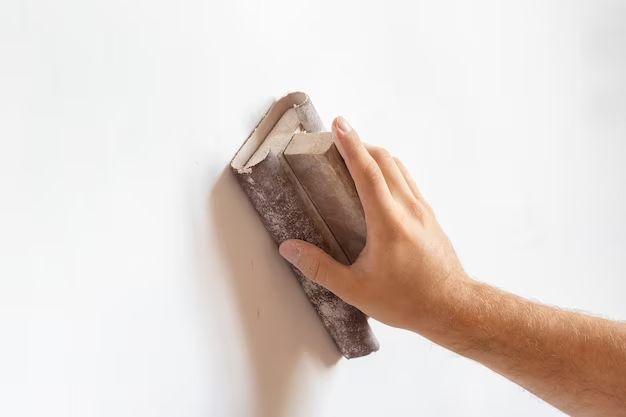When working on DIY projects around the house, you often need to sand small or tight spaces like corners, crevices, or intricate woodwork. Choosing the right sander for these situations can make the job much easier. There are a few key factors to consider when selecting a sander for tight spots.
Page Contents
What Are the Requirements for a Sander for Small Spaces?
Here are some of the main requirements to look for in a sander for small spaces:
- Compact size – It needs to be small enough to fit into tight corners and crevices.
- Maneuverability – A sander for tight spots should be easy to control and position at different angles.
- Variable speed – Adjustable speed allows you to use the right amount of power for different jobs.
- Dust collection – Containing the dust will keep the work area clean.
- Comfortable grip – You need to be able to hold and use it comfortably, even in awkward positions.
What Are the Different Types of Sanders for Small Spaces?
Some of the most common and effective sanders designed for tight spots include:
Detail Sanders
Detail sanders, also known as mouse sanders, are compact in size, typically around 5 inches long. They have a tapered triangular grip that allows excellent control for precision sanding. These are great for sanding in corners, around pipes, and other tight areas.
Palm Sanders
Palm sanders are also very small, usually 4-5 inches, designed to fit in your palm. The rounded grip fits comfortably in your hand. Palm sanders are versatile for a range of small sanding needs.
Oscillating Multi-Tools
Oscillating multi-tools are power tools that move in an oscillating motion rather than spinning. When fitted with a sanding attachment, they can get into the tightest spaces that other power sanders can’t. The fine sanding motion helps prevent damage to the workpiece.
Detail Rotary Tools
Rotary tools like Dremels are useful for detail sanding jobs. The small, narrow rotating heads allow you to maneuver them into any nook and cranny. They can be fitted with different sanding bands and bits to address various needs.
Which is the Best Sander for Tight Spaces?
When choosing the best sander for small spaces, there are a few top options to consider:
| Sander | Pros | Cons |
|---|---|---|
| Mouse Detail Sander | – Extremely compact and maneuverable – Tapered shape accesses corners – Affordable price |
– Limited power – Small sanding surface |
| Palm Sander | – Fits comfortably in hand – Lightweight – Variety of models available |
– No dust collection on some models – Not as compact as mouse sander |
| Oscillating Multi-Tool | – Gets into the tightest spaces – Range of sanding attachments – Powerful and versatile |
– More expensive – Takes practice to control sanding motion |
| Rotary Tool | – Extreme precision and control – Interchangeable heads – Variable speed |
– Limited dust collection – Small sanding surface |
Conclusion
For most small sanding jobs around the house, a compact palm sander or detail mouse sander is going to be your best bet. They provide a comfortable grip, maneuverability, and just the right amount of power. Models with dust collection like the Bosch PS31-2A or the DeWalt DWE6411 keep the work area clean.
If you need to get into the tightest spaces, an oscillating multi-tool with sanding attachments can cover the hardest-to-reach areas. For intricate detail sanding, rotary tools offer the most precision. Any of these sanders will make DIY projects much easier by allowing you to smoothly sand small spaces.
